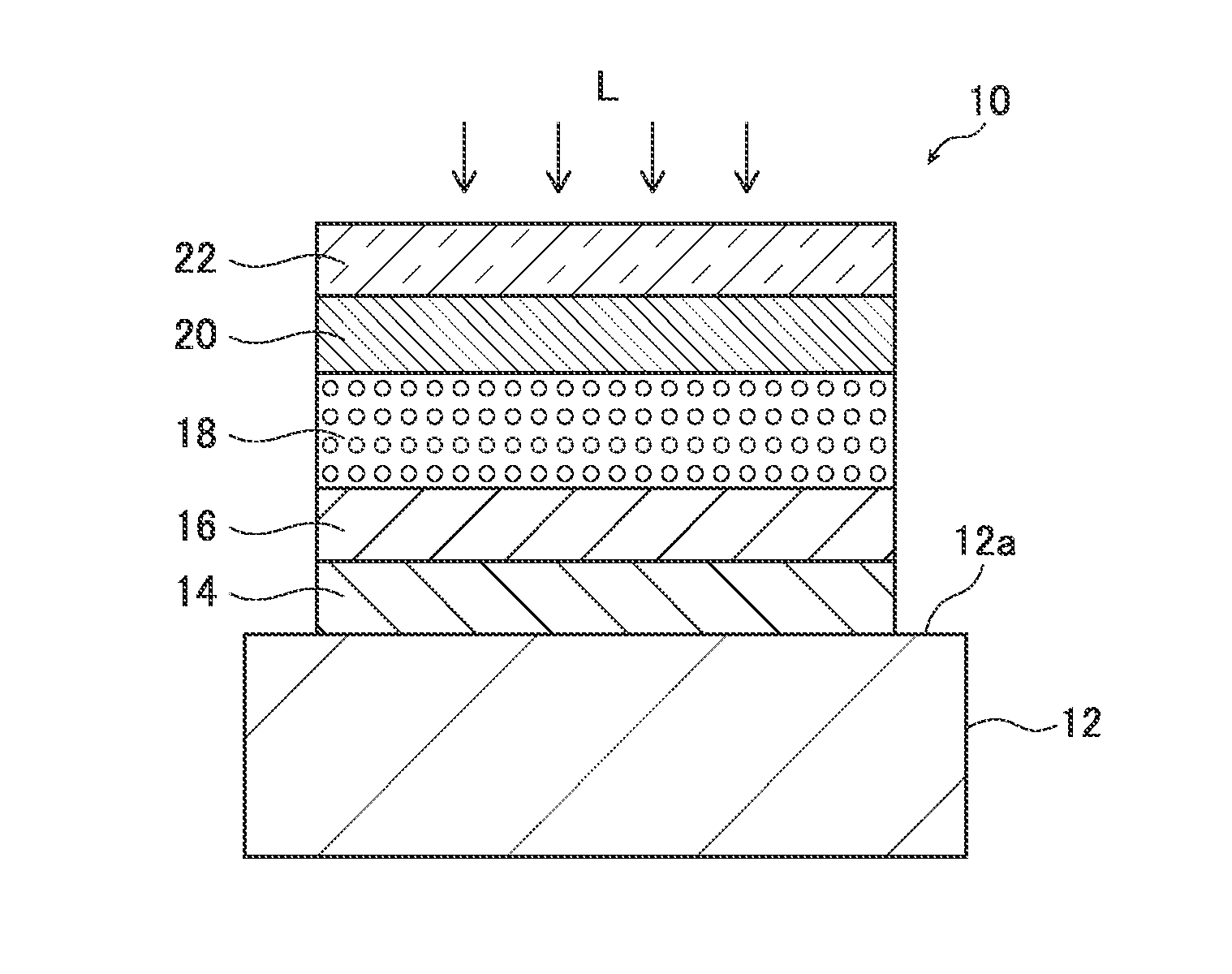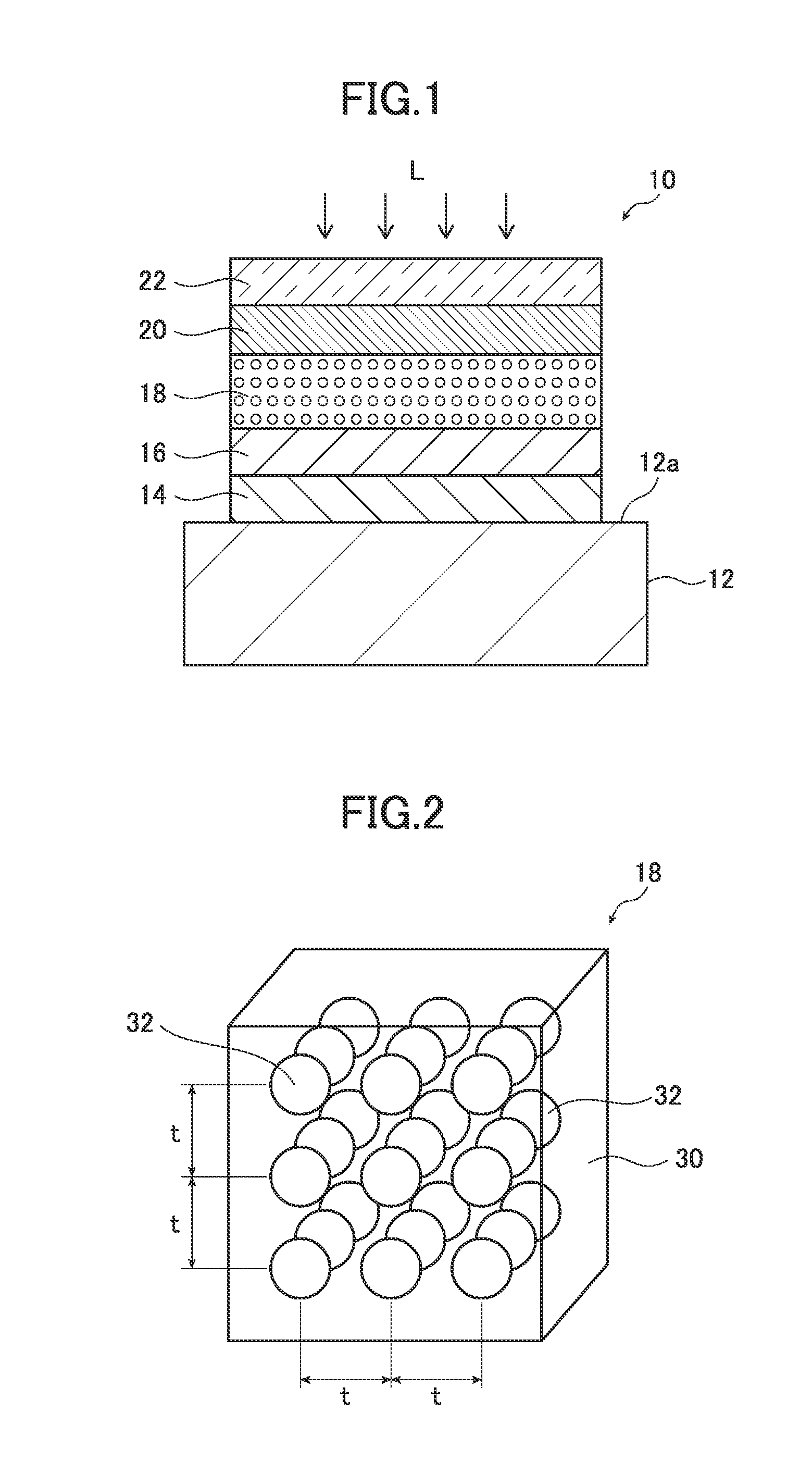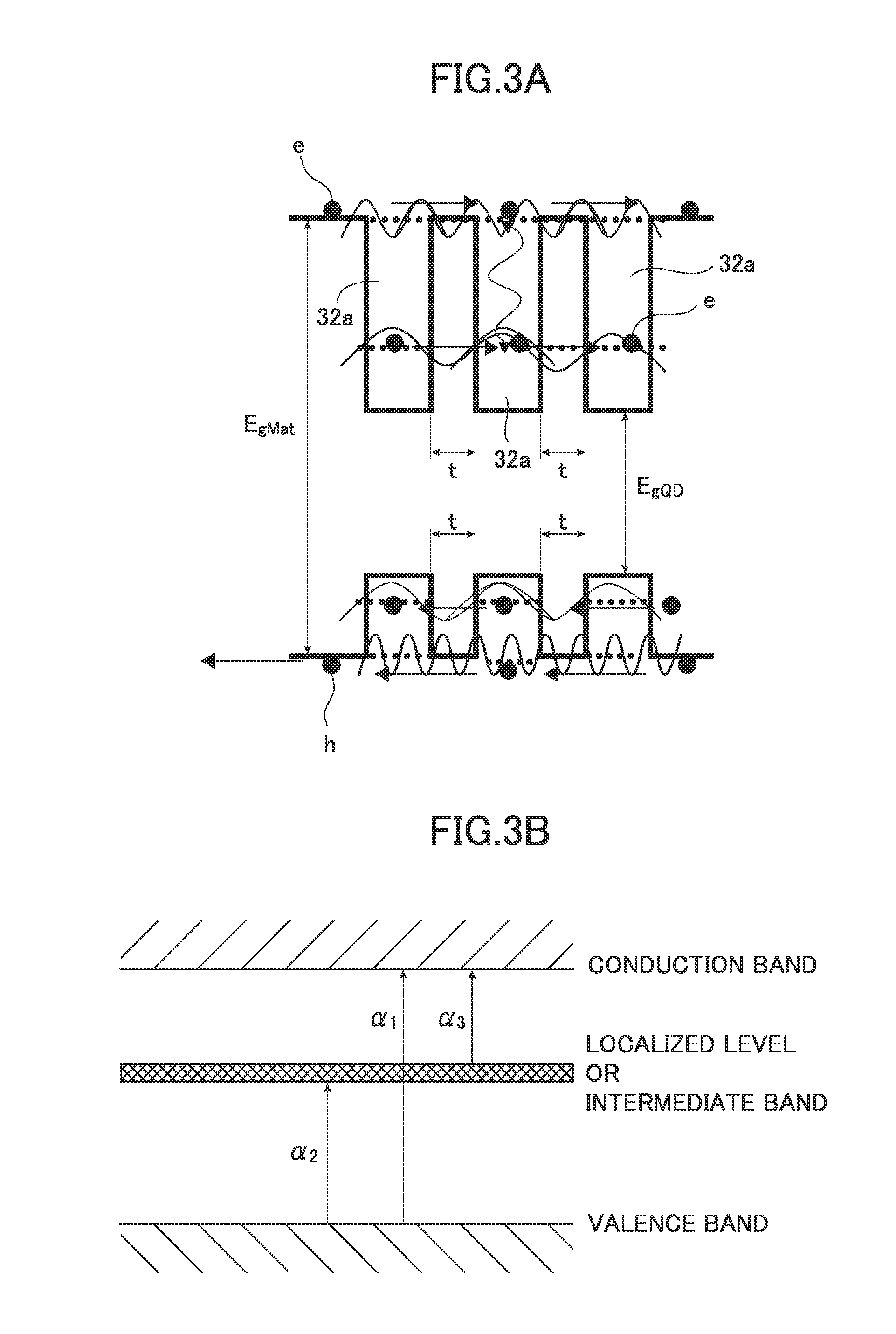Solar cell and solar cell manufacturing method
a solar cell and manufacturing method technology, applied in the field of solar cells, can solve the problems of inability to efficiently extract electrons resulting from photoelectric conversion by quantum dots, loss due to distribution bias, and uneven electric charge distribution, so as to reduce manufacturing costs, reduce carrier loss, and high energy conversion efficiency
- Summary
- Abstract
- Description
- Claims
- Application Information
AI Technical Summary
Benefits of technology
Problems solved by technology
Method used
Image
Examples
Embodiment Construction
[0052]The solar cell and solar cell production method of the invention will be described below based on preferred embodiments illustrated in the attached drawings.
[0053]The present invention was made based on the following findings obtained by the present inventors.
[0054]Carrier loss due to amorphization of a matrix material is currently thought to be caused by the fact that crystals formed by covalent bond as exemplified by Si and SiC acquire a localized electronic state when the crystals enter a disorderly crystalline state caused by amorphization. It is inferred therefrom that amorphization causes a rapid increase in carrier loss, which in turn makes it impossible to obtain a high energy conversion efficiency. Thus, we thought that use of a material having a carrier conduction track spatially expanding without creating a localized state of electric charge improves conversion efficiency even in disorderly crystalline state caused by amorphization and searched for a material having...
PUM
 Login to View More
Login to View More Abstract
Description
Claims
Application Information
 Login to View More
Login to View More - R&D
- Intellectual Property
- Life Sciences
- Materials
- Tech Scout
- Unparalleled Data Quality
- Higher Quality Content
- 60% Fewer Hallucinations
Browse by: Latest US Patents, China's latest patents, Technical Efficacy Thesaurus, Application Domain, Technology Topic, Popular Technical Reports.
© 2025 PatSnap. All rights reserved.Legal|Privacy policy|Modern Slavery Act Transparency Statement|Sitemap|About US| Contact US: help@patsnap.com



